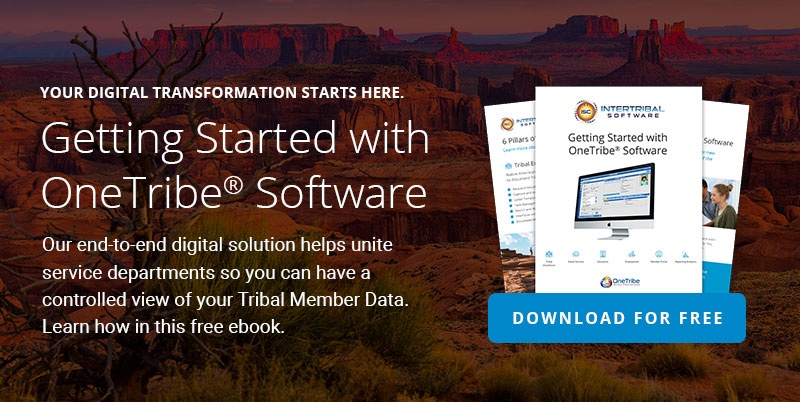
We talk fairly often about the benefits of organizing data and the valuable time saved from a digital enterprise content management (ECM) system. Having metadata is a key part of adding context and searchability to your tribal members’ information.
Let’s dive into how metadata functions in relation to your document management software:
How Does Document Metadata Work?
Imagine you have a binder with multiple assignments for school. To help differentiate between the types of assignments, your teacher puts binder tabs on your supply list. You label homework, tests, notes, and calendar tabs to differentiate how you interact with each of these types of assignments.
Metadata works in exactly the same way — though on a much grander scale depending on your tribal government’s volume of data. These contextual identifiers give you added information to label, find, and organize your content over time, all in one centralized place. It also allows you to use your software’s search functionality to quickly retrieve a document based on this stored information, so you don’t need to remember someone’s name to access what it is if you remembered it was a document created yesterday, as an example.
There are multiple different types of metadata, including:
- Fields: Names, numbers, file types, and dates
- Tags: Subject identifiers or keywords such as “education,” or “legal,” for instance
- Versions: Access all variations of a document that’s made, so you can keep track of who’s made what changes
- Links: Create data that’s related to each other, so you can keep financial information separate from other functions
- E-signatures: Track when approvals have been made, and by whom
- Rights: Copyright status and licensing terms for any intellectual property or legal ownership
If you’ve ever used Google or another search engine, then you’ve called upon the power of metadata to help find what you’re looking for. In an ECM system, it works exactly the same way — cataloguing and grouping together relative identifiers to help you find what you need faster.

Metadata and Document Management
Think of assigning metadata as the automatic routing into your allocated binder tab, except it’s accessible to everyone (that you allow, that is). This creates a convenient ecosystem for your staff to easily retrieve documentation from a grouping that’s only one search away in your ECM.
You’re then able to select what’s required in a document — like author and certain fields, for example — so your information can be universally filled out the same. That way, you won’t be questioning an aspect of the file that’s missing.
For example, if you’ve made a link between two documents, they can be connected together and referenced later. This can be used for email attachments no matter where they’re located in the software.
One of the major benefits to digital metadata lies in the hours saved by your staff, thereby giving them more time to invest their day toward other relevant tribal services and member support.
When implementing a document management solution, putting a strategy in place to appropriately organize and store your files through metadata will create a simplified environment for finding and routing your processes. Every tribal government’s needs are going to be different around this, so there’s no one size fits all template when creating a digital filing system, but a simple, yet effective hierarchy for your files will make the ongoing organization of your files seamless.
Top tip: When it comes to your document metadata system, start with less, and build over time as your processes grow and become more efficient. The more you add, the longer load times can take, or the more ambiguity you can invite when others start using your metadata system.
The Power to Organize on Your Terms
There are multiple ways you can apply metadata to your files so you’re able to search and retrieve what you need for your tribal members effectively. It’s all about the way you want to search, and how to do so most efficiently with your tribal government’s processes.
Learn more about the value of document management and all the ways it’s able to save on time and add efficiency and keep your staff engaged and focused on higher-level activities by requesting a demo with us today.
Sign Up For Our Newsletter
Recent Posts
- Innovations in Housing: Revolutionizing Tribal Housing with Digital Tools for Management
- Empowering Tribal ICW Departments: Achieve ICWA Compliance and Certification Success with OneTribe® Software
- OneTribe CCA - Your Child Care Data Tracker Replacement Solution
- Transform Your Tribal Member Services With Integrated Software Solutions
- Intertribal Software Raises Strategic Investment
Categories
- OneTribe Software
- digital transformation
- tribal government software
- Laserfiche ECM
- Intertribal Software Consultants
- Childcare Assistance
- Housing Management
- Intertribal Software
- tribal member management
- AFCARS Data Collection
- Child Care Data Tracker
- Child Welfare
- Housing
- ICWA
- ICWA Compliance
- Indian Child Welfare Act
- OneTribe Platform
- Title IV-E Certification
- Tribal Data Tracker
- Tribal Family Services
- Tribal Housing
- Tribal ICWA Software
















